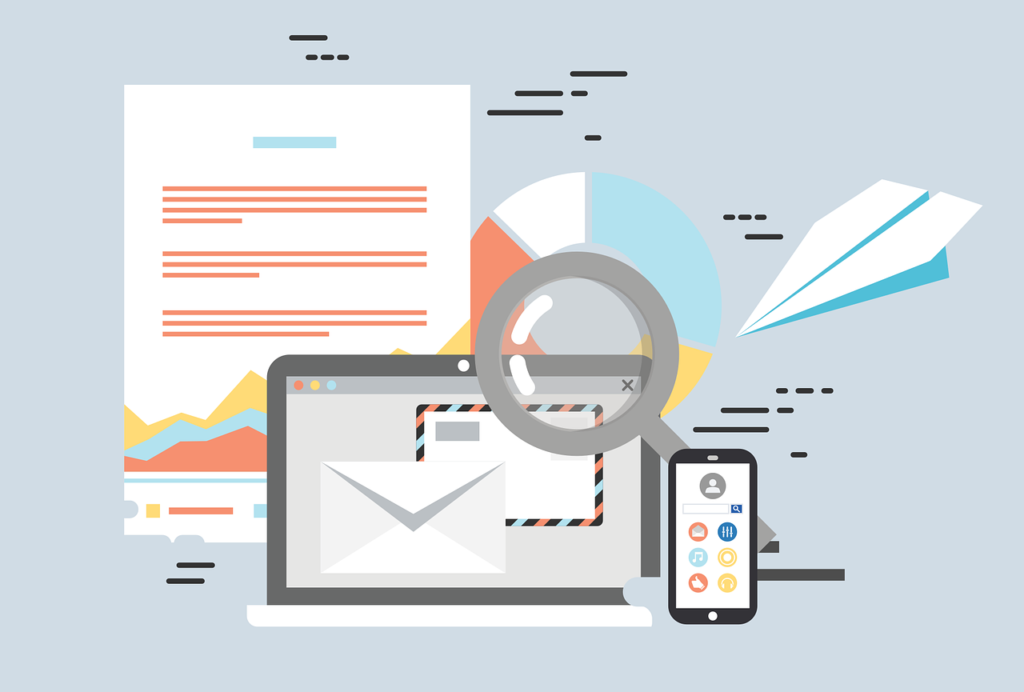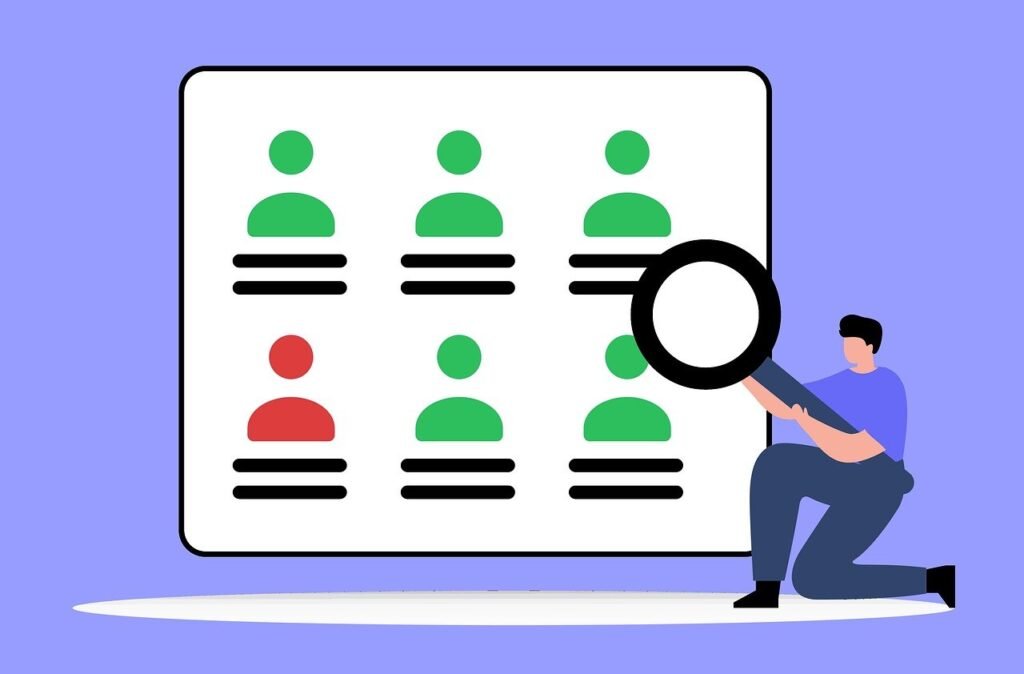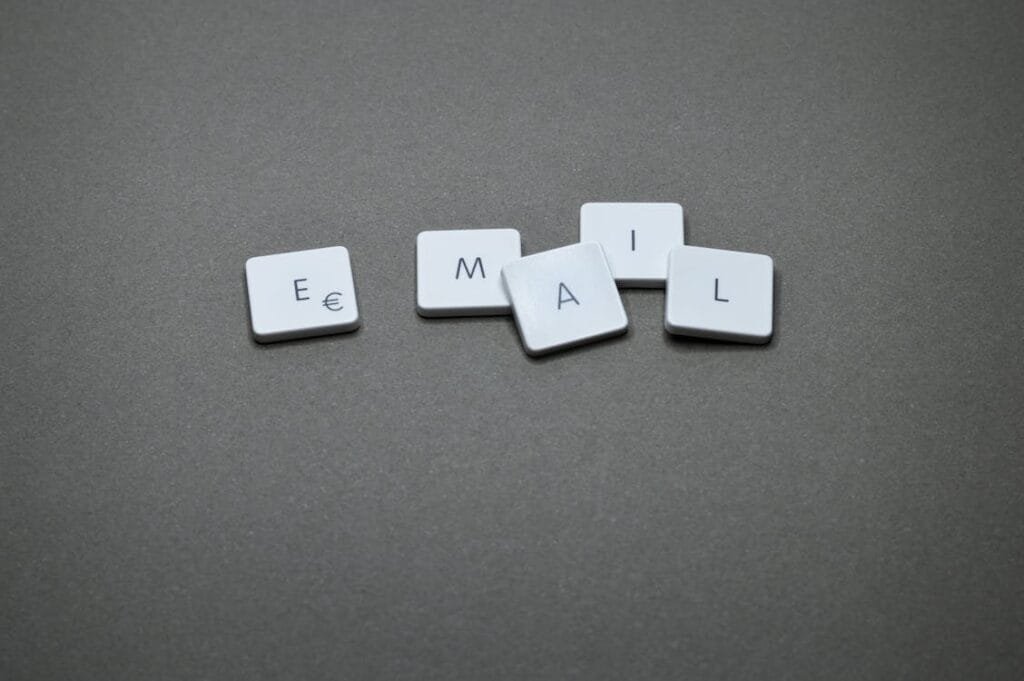This Article has been revised, edited and added to, by Poulomi Chakraborty.
- The Psychology Behind Email Subject Lines
- Proven Techniques for Crafting Compelling Subject Lines
- The Importance of Relevance in Subject Lines
- Crafting Emotional Subject Lines
- The Role of A/B Testing in Refining Subject Lines
- Analyzing Performance and Making Data-Driven Decisions
- Conclusion
In the crowded world of email marketing, your subject line is your first and often only chance to grab your reader’s attention. It’s the make-or-break moment that determines whether your carefully crafted email gets opened or sent straight to the trash. With attention spans shrinking and inboxes overflowing, how do you ensure your email stands out? The secret lies in crafting compelling email subject lines.
Effective email subject lines are an art form. They require a balance of creativity, psychology, and strategy. In this guide, we’ll dive deep into the nuances of creating subject lines that not only capture attention but also drive higher open rates. We’ll explore proven techniques, common pitfalls, and the psychology behind what makes a subject line irresistible. By the end of this article, you’ll have a toolbox of strategies to craft subject lines that your audience can’t resist clicking on.
The Psychology Behind Email Subject Lines

Understanding the psychology behind what makes a subject line compelling is the first step to improving your email open rates. Human brains are wired to react to certain triggers and stimuli, and knowing these can give your subject lines an edge.
Curiosity
Curiosity is a powerful motivator. When people see something that piques their interest or poses a question, they feel compelled to find out more. This is why subject lines that tease the content of the email without giving everything away can be incredibly effective. For example, a subject line like “You Won’t Believe What Happened Next” or “This One Tip Will Change Your Life” leverages curiosity to entice readers to open the email.
Urgency
Creating a sense of urgency can prompt immediate action. Subject lines that suggest scarcity or a limited-time offer can drive readers to open your email right away. Phrases like “Only 24 Hours Left!” or “Last Chance to Save” tap into the fear of missing out (FOMO), compelling readers to act quickly.
Personalization
Personalized subject lines can make your email feel more relevant to the recipient. Using the recipient’s name or referencing their recent activity can make your subject line stand out in a crowded inbox. For example, “John, Don’t Miss Out on This Exclusive Offer” feels more personal and engaging than a generic subject line.
Relevance
Ensuring that your subject line is relevant to your audience’s interests and needs is crucial. Irrelevant subject lines will be ignored or, worse, marked as spam. Understanding your audience’s preferences and pain points can help you craft subject lines that resonate with them.
Clarity
While creativity is important, clarity should never be sacrificed. Your subject line should clearly convey the benefit or content of the email. Ambiguous or misleading subject lines can lead to higher open rates initially, but they will damage your credibility and lead to higher unsubscribe rates in the long run.
Emotional Triggers
Emotions play a significant role in decision-making. Subject lines that evoke strong emotions such as happiness, surprise, or even fear can be highly effective. For instance, “Discover the Secret to Happiness” or “Don’t Let This Happen to You” are designed to elicit emotional responses that drive engagement.
Comparison: Curiosity vs. Clarity
While both curiosity and clarity are essential elements of compelling subject lines, they can sometimes seem at odds with each other. Curiosity-driven subject lines are designed to intrigue and entice, often by withholding key information. Clarity-driven subject lines, on the other hand, aim to be straightforward and transparent about the email’s content.
Let’s compare these two approaches to understand when and how to use them effectively:
Curiosity-Driven Subject Lines
Curiosity-driven subject lines can generate high open rates because they create a sense of mystery and intrigue. For instance, a subject line like “The Secret to Boosting Your Productivity” entices readers to open the email to uncover the secret.
However, if overused or if the email content doesn’t live up to the hype, this approach can backfire, leading to disappointed subscribers and increased unsubscribe rates.
Clarity-Driven Subject Lines
Clarity-driven subject lines, such as “10 Tips to Boost Your Productivity,” are straightforward and set clear expectations. They appeal to readers who prefer to know exactly what they will get before they open the email. This approach builds trust and ensures that your audience knows what to expect, which can lead to more engaged and satisfied subscribers.
Balancing Curiosity and Clarity
The most effective email subject lines often strike a balance between curiosity and clarity. They provide enough information to set clear expectations while still leaving enough intrigue to encourage the reader to open the email. For example, “Boost Your Productivity with These 10 Tips” combines the intrigue of “boosting productivity” with the clarity of “10 tips.”
Both curiosity and clarity are valuable tools in your subject line arsenal. Understanding your audience and testing different approaches can help you determine the right balance for your email campaigns.
Proven Techniques for Crafting Compelling Subject Lines

Understanding the psychology behind effective subject lines is just the beginning. Implementing proven techniques can significantly enhance your email open rates. In this section, we will delve into some of the most successful strategies for crafting compelling email subject lines.
Keep It Short and Sweet
In the age of mobile devices, brevity is key. Most email clients, especially on mobile devices, truncate subject lines that are too long. To ensure your subject lines are fully visible and impactful, aim to keep them under 50 characters. A short, punchy subject line can capture attention quickly and effectively.
Use Actionable Language
Actionable language motivates readers to take the next step. Using verbs and encouraging action can make your subject lines more dynamic and engaging. Phrases like “Download Now,” “Discover How,” and “Join Us” prompt immediate responses and set clear expectations for the content of the email.
Create a Sense of Urgency
As discussed earlier, urgency can be a powerful motivator. Incorporating time-sensitive phrases such as “Limited Time Offer,” “Ends Tonight,” or “Only a Few Spots Left” can create a sense of urgency that compels readers to act quickly. This tactic leverages the fear of missing out, driving higher open rates.
Personalize Whenever Possible
Personalization can make your emails feel more relevant and engaging. Using the recipient’s name in the subject line or referencing their recent activity can create a sense of connection. For instance, “John, Your Exclusive Offer Awaits” feels more personal and tailored than a generic subject line. Additionally, segmenting your email list based on demographics, past behavior, or preferences allows for even more targeted and personalized subject lines.
Ask Intriguing Questions
Questions naturally pique curiosity and invite readers to find out the answer. A well-crafted question can make your subject line stand out and encourage opens. For example, “Are You Making These Common Mistakes?” or “What’s Your Productivity Score?” invites readers to explore further. The key is to ensure the question is relevant and engaging to your audience.
Offer Value and Benefits
Clearly conveying the value or benefit of opening the email can significantly boost open rates. Highlighting what’s in it for the reader, such as exclusive discounts, helpful tips, or valuable insights, can make your subject line more appealing. For example, “Unlock 20% Off Your Next Purchase” or “Get the Ultimate Guide to SEO Success” promises a clear benefit to the reader.
Use Numbers and Lists
Numbers and lists can make your subject lines more specific and scannable. People are naturally drawn to numbers because they suggest structure and easily digestible information. Subject lines like “5 Ways to Improve Your Email Marketing” or “Top 10 SEO Tips for 2024” provide clear expectations about the email content and can drive higher open rates.
Test and Analyze
No matter how compelling your subject line might seem, testing is crucial. A/B testing allows you to compare different subject lines to see which performs better. Experiment with various approaches, lengths, and styles to determine what resonates most with your audience. Regular analysis of your email metrics, such as open rates and click-through rates, will provide valuable insights into what works and what doesn’t.
Avoid Spammy Language
Certain words and phrases can trigger spam filters, causing your emails to be sent straight to the junk folder. Avoiding terms like “Free,” “Buy Now,” or “100% Guaranteed” can help ensure your emails reach your audience’s inbox. Instead, focus on creating genuine, value-driven subject lines that avoid the appearance of spam.
Keep Your Brand Voice Consistent
Maintaining a consistent brand voice in your subject lines helps build trust and recognition with your audience. Whether your brand voice is casual and friendly or formal and professional, your subject lines should reflect this. Consistency in tone and style reinforces your brand identity and can enhance the overall effectiveness of your email marketing campaigns.
Incorporating these techniques into your email subject line strategy can lead to higher open rates and more engaged readers. Understanding your audience, testing different approaches, and continuously refining your strategy are key to crafting subject lines that consistently perform well.
The Importance of Relevance in Subject Lines

Relevance is a cornerstone of effective email marketing. A subject line that resonates with your audience’s interests, needs, and preferences can significantly boost your open rates. In this section, we’ll explore the various aspects of ensuring relevance in your email subject lines.
Know Your Audience
Understanding your audience is the first step in crafting relevant subject lines. This involves gathering and analyzing data about your subscribers, including their demographics, behavior, and preferences. Tools such as surveys, feedback forms, and analytics platforms can provide valuable insights into what your audience cares about.
By segmenting your email list based on these insights, you can create more targeted and relevant subject lines. For example, a clothing retailer might send different emails to subscribers based on their purchase history, such as “New Summer Dresses Just for You” to those who frequently buy dresses, versus “Exclusive Sneaker Collection Launch” to those who prefer sneakers.
Align with Current Events and Trends
Tapping into current events and trends can make your subject lines feel timely and relevant. This can include referencing holidays, seasons, cultural events, or industry-specific news. For example, an email sent during the holiday season might have a subject line like “Get Your Holiday Shopping Done Early – Special Discounts Inside,” while an email to tech enthusiasts during a major tech conference might read “Top Insights from CES 2024.”
Staying updated on what’s happening in your industry and the world at large allows you to create subject lines that are not only relevant but also engaging to your audience.
Personalize Based on Behavior
Behavioral data can provide powerful insights for personalization. Tracking how subscribers interact with your emails and website can help you tailor subject lines to their specific actions and interests. For example, if a subscriber recently browsed your online store for kitchen appliances but didn’t make a purchase, a follow-up email with the subject line “Still Interested in Our Best-Selling Blenders?” can prompt them to reconsider.
Similarly, if a subscriber consistently engages with your blog content about fitness, a subject line like “Exclusive: New Fitness Tips Just for You” can feel highly relevant and personalized.
Use Language That Resonates
The language you use in your subject lines should resonate with your audience. This includes using terminology and phrases that they are familiar with and that reflect their interests and values. For instance, a subject line for a tech-savvy audience might include terms like “AI” or “Blockchain,” while a subject line for a health-conscious audience might highlight “Wellness” or “Organic.”
Adopting a tone and style that aligns with your brand and your audience’s expectations can enhance the relevance and appeal of your subject lines.
Address Pain Points and Solutions
Understanding your audience’s pain points and offering solutions can make your subject lines highly relevant. If you know your subscribers struggle with a particular issue, addressing it directly in your subject line can capture their attention. For example, “Struggling with Email Deliverability? Here’s the Fix” directly addresses a common pain point for email marketers and offers a solution.
This approach not only demonstrates that you understand your audience’s challenges but also positions your email content as valuable and helpful.
Keep It Fresh and Dynamic
Relevance also means keeping your subject lines fresh and dynamic. Avoid using the same or similar subject lines repeatedly, as this can lead to fatigue and reduced engagement. Regularly updating and refreshing your subject line strategy based on current data and trends helps maintain interest and relevance.
Experimenting with different approaches, such as varying the tone, style, or focus of your subject lines, can keep your emails interesting and engaging for your audience.
Provide Clear Value Proposition
Clearly communicating the value proposition in your subject line ensures that your audience understands what they will gain by opening your email. Whether it’s access to exclusive content, a special discount, or valuable insights, making the benefit clear can enhance the relevance and attractiveness of your subject line.
For example, “Unlock Exclusive Content Now” or “Save 20% on Your Next Order” clearly convey the value and incentivize the recipient to open the email.
Ensuring relevance in your email subject lines requires a deep understanding of your audience, continuous testing and refinement, and a strategic approach to personalization and timing. By focusing on relevance, you can create subject lines that not only capture attention but also drive higher engagement and open rates.

Crafting Emotional Subject Lines
Emotions play a significant role in human decision-making. Email subject lines that evoke strong emotions can captivate your audience and drive higher open rates. In this section, we will explore how to craft emotional subject lines and the impact they can have on your email marketing success.
Understanding Emotional Triggers
Different emotions can drive different actions. Understanding the emotional triggers that resonate with your audience can help you create subject lines that elicit the desired response. Common emotional triggers include happiness, curiosity, fear, and urgency.
Evoking Happiness and Joy
Subject lines that evoke happiness and joy can create a positive association with your brand. Words and phrases that suggest excitement, celebration, or satisfaction can be very effective. For example, “Celebrate with Us – Exclusive Discounts Inside!” or “Get Ready for a Summer of Fun!” use positive language to create an uplifting and inviting tone.
Using emojis can also enhance the emotional appeal of your subject lines. Emojis like 😊 or 🎉 can visually convey happiness and excitement, making your subject line stand out in the inbox.
Sparking Curiosity
Curiosity is a powerful emotional trigger that can drive people to open your email to learn more. Subject lines that tease intriguing information or pose interesting questions can spark curiosity. For instance, “You Won’t Believe What’s Inside” or “What’s Your Secret to Success?” invites readers to explore further to satisfy their curiosity.
The key is to ensure that the content of the email lives up to the promise of the subject line. Disappointing your readers with irrelevant or uninteresting content can damage your credibility and lead to higher unsubscribe rates.
Leveraging Fear and Urgency
Fear and urgency can compel immediate action. Subject lines that suggest a limited time to act or the potential for missing out can create a sense of urgency and prompt quick responses. Examples include “Only 24 Hours Left to Save!” or “Don’t Miss Out on This Limited Offer.”
However, it’s important to use fear and urgency judiciously. Overuse of these tactics can lead to subscriber fatigue and may come across as manipulative. Balancing urgency with genuine value can ensure that your subject lines remain effective and trustworthy.
Creating a Sense of Belonging
Humans have an innate desire to belong to a group or community. Subject lines that create a sense of belonging or exclusivity can be highly engaging. Phrases like “Join Our Exclusive Club” or “Be Part of Our Inner Circle” make readers feel special and valued.
Personalization can enhance this sense of belonging. Using the recipient’s name or referencing their past interactions with your brand can make the subject line feel more personal and inclusive.
Tapping into Nostalgia
Nostalgia can evoke powerful emotions and positive memories. Subject lines that reference past experiences or popular culture can create a warm, nostalgic feeling. For example, “Remember When…?” or “Relive the Best Moments with Us” can connect emotionally with your audience and encourage them to open your email.
Understanding the demographics of your audience can help you tailor nostalgic references to resonate more effectively. For example, referencing popular trends from the 90s might be more relevant for an audience in their 30s and 40s.
Building Trust and Credibility
Trust is a crucial emotion in building long-term relationships with your audience. Subject lines that convey honesty, reliability, and integrity can build trust and encourage engagement. Phrases like “Our Promise to You” or “Your Trusted Source for… ” suggest a commitment to quality and transparency.
Being honest about what’s inside the email and delivering on the promises made in the subject line can enhance your credibility and foster a loyal subscriber base.
Balancing Emotions for Maximum Impact
Balancing different emotional triggers can create a well-rounded subject line strategy. While one email might leverage curiosity, another might evoke joy or urgency. The key is to understand the context and the specific goals of each email campaign.
Testing different emotional approaches can provide insights into what resonates best with your audience. Regularly reviewing your email performance metrics, such as open rates and click-through rates, can help you refine your strategy and achieve better results.
Crafting emotional subject lines requires a deep understanding of your audience’s motivations and preferences. By leveraging various emotional triggers, you can create subject lines that not only capture attention but also build meaningful connections with your readers.
The Role of A/B Testing in Refining Subject Lines

A/B testing, also known as split testing, is an essential tool in the arsenal of any email marketer. It allows you to test different versions of your subject lines to determine which one performs better.
This data-driven approach can significantly improve your email open rates and overall campaign effectiveness. In this section, we will explore the importance of A/B testing, how to conduct it, and how to analyze the results to refine your subject lines.
Why A/B Testing is Crucial
Even the most experienced marketers can’t always predict which subject lines will resonate best with their audience. A/B testing takes the guesswork out of the equation by providing concrete data on what works and what doesn’t. This process helps you understand your audience’s preferences and behaviors, leading to more effective and engaging subject lines.
Setting Up an A/B Test
Setting up an A/B test involves creating two or more variations of a subject line and sending them to different segments of your email list. Here’s a step-by-step guide to conducting an A/B test:
Define Your Goal
Before you start testing, it’s important to define your goal. Are you looking to increase open rates, click-through rates, or another metric? Having a clear objective will help you design your test and measure its success.
Create Variations
Create two or more variations of your subject line. These variations can differ in various ways, such as length, tone, wording, or emotional triggers. For example, you might test a curiosity-driven subject line against a straightforward, value-focused one.
Segment Your Audience
Divide your email list into equally sized, random segments. Each segment should be representative of your overall audience to ensure accurate results. Typically, you’ll want to send each variation to a small percentage of your total list to start.
Send and Monitor
Send each subject line variation to its respective segment and monitor the performance. It’s important to allow enough time for recipients to open the email, usually 24-48 hours, to gather sufficient data.
Analyze the Results
Analyze the performance of each subject line based on your defined goal. Look at key metrics such as open rates, click-through rates, and any other relevant data. Determine which variation performed best and why.
Common Variables to Test
There are many different elements of a subject line that you can test. Here are some common variables to consider:
Length
Testing different lengths of subject lines can reveal what works best for your audience. Some audiences may prefer short, concise subject lines, while others respond better to longer, more descriptive ones.
Personalization
Including personalization elements, such as the recipient’s name or location, can impact open rates. Testing personalized versus non-personalized subject lines can help determine the effectiveness of this tactic.
Emotional Triggers
Different emotional triggers, such as curiosity, urgency, or joy, can have varying impacts on your audience. Testing subject lines that evoke different emotions can provide insights into what resonates most.
Phrasing and Tone
The phrasing and tone of your subject line can also influence open rates. Testing formal versus casual language, or playful versus serious tones, can help you understand your audience’s preferences.
Interpreting A/B Test Results
Once you’ve gathered data from your A/B test, it’s crucial to interpret the results correctly. Here are some tips for analyzing your A/B test results:
Statistical Significance
Ensure that the results are statistically significant. This means that the difference in performance between your subject lines is not due to random chance. There are online tools and calculators available to help determine statistical significance.
Consider the Context
Context matters when interpreting A/B test results. Consider external factors that might have influenced the performance, such as the time of day the emails were sent or any concurrent marketing campaigns.
Look for Patterns
If you conduct A/B tests regularly, look for patterns in the results. Consistent trends can provide valuable insights into what generally works best for your audience.
Refining Your Strategy
The insights gained from A/B testing should be used to refine your subject line strategy. Continuously applying what you learn will help you create more effective subject lines over time. Regular testing and iteration are key to staying relevant and engaging with your audience.
A/B testing is a powerful tool that allows you to optimize your email subject lines based on real data. By regularly testing different variables and refining your approach, you can significantly improve your email open rates and overall campaign performance.
Analyzing Performance and Making Data-Driven Decisions

After implementing and testing various subject lines, the next crucial step is analyzing the performance data and making informed decisions based on the insights gained. This process involves understanding key metrics, interpreting the data, and applying the findings to improve future campaigns. In this section, we’ll delve into the essential aspects of performance analysis and how to use data to enhance your email marketing strategy.
Key Metrics to Track
Several metrics can provide insights into the effectiveness of your email subject lines. Understanding these metrics is vital for making data-driven decisions.
Open Rates
Open rates are the most direct measure of a subject line’s effectiveness. They indicate the percentage of recipients who opened your email. A high open rate suggests that the subject line successfully captured attention, while a low open rate may indicate that it failed to engage your audience.
Click-Through Rates (CTR)
While open rates measure initial engagement, click-through rates (CTR) provide insight into how compelling the content of your email was. A high CTR indicates that the subject line and the email content were aligned and persuasive, prompting recipients to take action.
Conversion Rates
Conversion rates track the percentage of recipients who completed a desired action, such as making a purchase or signing up for a webinar. This metric is crucial for understanding the overall effectiveness of your email campaign and the quality of the leads generated.
Bounce Rates
Bounce rates measure the percentage of emails that were not delivered to the recipient’s inbox. A high bounce rate can negatively impact your sender reputation and email deliverability. Monitoring bounce rates can help you maintain a healthy email list and improve your email campaign’s effectiveness.
Unsubscribe Rates
Unsubscribe rates indicate the percentage of recipients who opted out of your email list after receiving your email. A high unsubscribe rate may signal that your subject lines or email content are not meeting your audience’s expectations.
Interpreting the Data
Interpreting the data involves looking beyond the numbers to understand the underlying reasons for your email campaign’s performance. Here are some steps to help you interpret the data effectively:
Identify Patterns and Trends
Look for patterns and trends in your metrics over time. Consistent performance, whether positive or negative, can provide valuable insights into what is working and what isn’t. For example, if you notice that subject lines with a certain tone consistently achieve higher open rates, this can inform your future strategies.
Segment Your Data
Segmenting your data by different audience groups can reveal how various segments respond to your subject lines. For instance, you might find that certain demographics respond better to personalized subject lines, while others prefer straightforward and informative ones.
Compare Against Benchmarks
Comparing your performance metrics against industry benchmarks can help you gauge how well your campaigns are performing relative to competitors. This context can highlight areas for improvement and set realistic goals for your email marketing efforts.
Analyze the Content Alignment
Ensure that the content of your email aligns with the promise made in the subject line. A high open rate but low CTR might indicate that while the subject line was compelling, the email content did not meet the reader’s expectations. Conversely, a low open rate but high CTR suggests that while fewer people opened the email, those who did found the content highly engaging.
Making Data-Driven Decisions

Using the insights gained from performance analysis, you can make informed decisions to refine your email marketing strategy. Here are some ways to apply these insights:
Optimize Future Subject Lines
Use the data to identify which types of subject lines resonate best with your audience. Whether it’s the tone, length, personalization, or emotional triggers, understanding these elements can help you craft more effective subject lines in the future.
Refine Audience Segmentation
Analyzing performance data by audience segments can help you refine your segmentation strategy. Tailoring subject lines and email content to specific segments can enhance relevance and engagement.
Adjust Timing and Frequency
Data on open rates and CTR can also inform the optimal timing and frequency of your email campaigns. Experimenting with different send times and frequencies and analyzing the results can help you determine the best schedule for your audience.
Continuously Test and Iterate
The process of testing and optimization should be ongoing. Regularly conducting A/B tests and analyzing performance data allows you to continuously refine your strategy and stay ahead of changing audience preferences.
Tools for Data Analysis
Several tools can assist you in tracking and analyzing your email marketing performance. Email marketing platforms like Mailchimp, HubSpot, and Campaign Monitor offer built-in analytics that provide detailed insights into your campaign metrics. Additionally, integrating these platforms with your CRM system can provide a more comprehensive view of your audience’s behavior and preferences.
Analyzing performance and making data-driven decisions are essential components of a successful email marketing strategy. By continuously monitoring key metrics, interpreting the data, and applying the insights to optimize your subject lines and campaigns, you can achieve higher engagement and better results.
Conclusion
Crafting compelling email subject lines is both an art and a science. By understanding the psychology behind what captures attention, using proven techniques, and continuously testing and analyzing your approach, you can significantly enhance your email open rates. The key is to balance creativity with data-driven insights, ensuring your subject lines are relevant, engaging, and aligned with your audience’s needs and preferences.
Emotional triggers, personalization, and a keen awareness of trends all play crucial roles in creating subject lines that not only get noticed but also drive meaningful engagement. As you refine your strategy, remember that consistency in testing and optimization will keep your email marketing efforts effective and impactful, ultimately fostering stronger connections with your audience and achieving your campaign goals.
Read next
- Impact of Predictive Analytics on Sales Forecasting: A Deep Dive!
- How to use GetResponse: An Explainer!
- How to use Loomly: An In-Depth Explainer
- How to use SocialPilot: An Explainer!
- How to use Sendible: An Explainer






















Comments are closed.